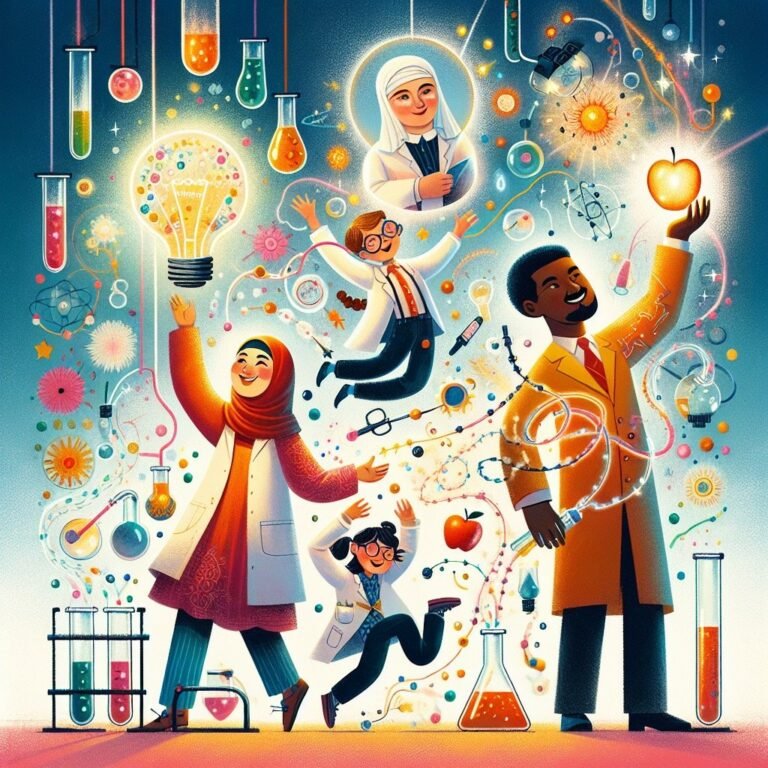Welcome to our latest post on “Fun Facts for Kids About Scientists!” If you’re looking to inspire curiosity and spark a love for science in young minds, you’ve come to the right place. In this engaging blog post, we delve into the fascinating lives and groundbreaking achievements of some of the most influential figures in the world of science. From Marie Curie’s pioneering work in radioactivity to Stephen Hawking’s exploration of black holes, each scientist’s story is sure to captivate and inspire readers of all ages. Join us on this exciting journey as we uncover fun facts about scientists that will ignite a passion for learning and discovery in children everywhere. Let’s celebrate the incredible contributions of these cool scientists and showcase the wonders of the natural world through their inspiring stories!
Fun Facts for Kids About Scientists
1. Marie Curie: Pioneer of Radioactivity
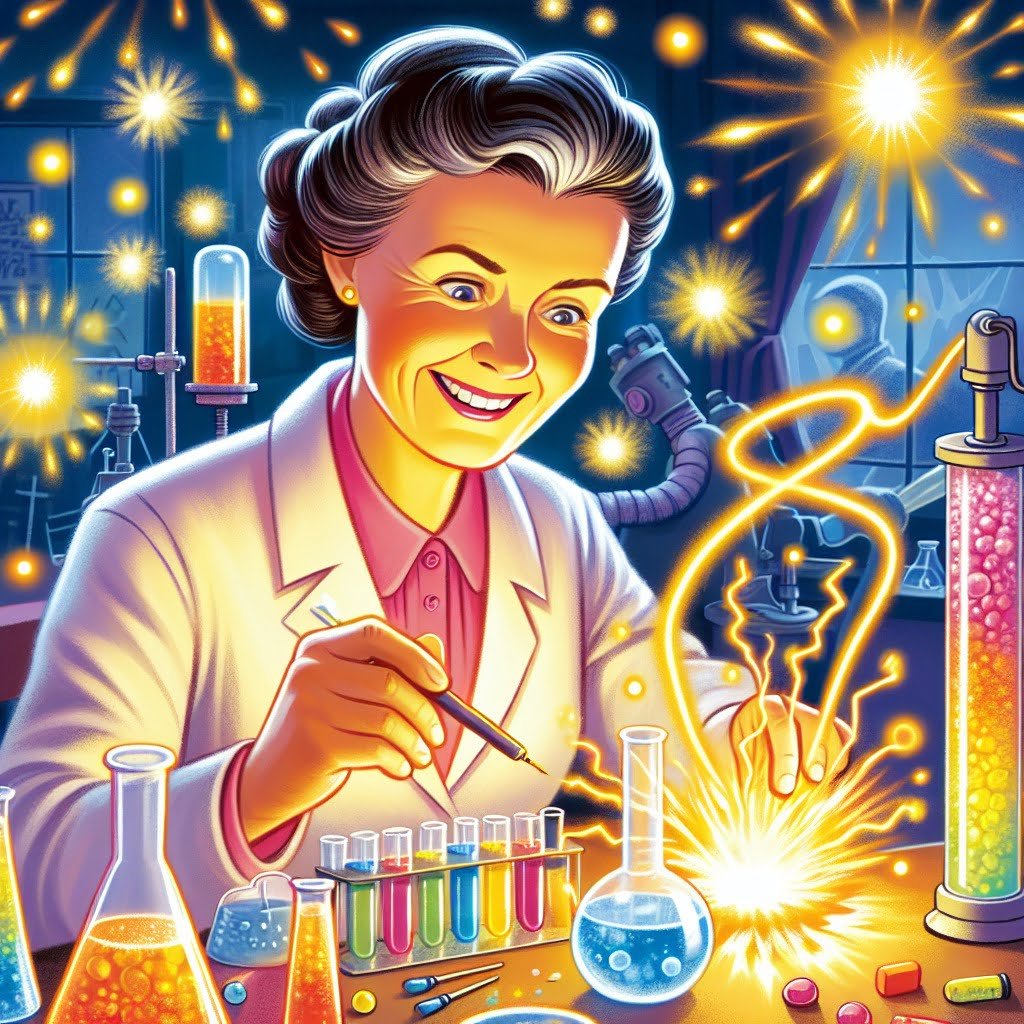
For younger kids: Marie Curie discovered that some elements give off a special kind of energy called radioactivity.
For older kids: Marie Curie was the first woman to win a Nobel Prize and the only person to win Nobel Prizes in two different scientific fields – physics and chemistry.
Detailed explanation:Marie Curie is undoubtedly one of the most famous scientists in history, known for her groundbreaking research on radioactivity. Born in Poland in 1867, she went on to become the first woman to win a Nobel Prize, and the only person to win Nobel Prizes in two different scientific fields – physics and chemistry.
One of the most interesting Fun Facts for Kids About Scientists is that Marie Curie actually coined the term “radioactivity.” She discovered two new elements, polonium and radium, and conducted pioneering research on the properties of these radioactive elements. Her work laid the foundation for the development of X-ray machines, which have been instrumental in medical diagnostics and treatment.
Despite facing discrimination as a woman in a male-dominated field, Marie Curie persevered and made significant contributions to science. Her research on radioactivity revolutionized our understanding of the atom and paved the way for future discoveries in nuclear physics and medicine.
Another fun fact for kids about Marie Curie is that she was not only a brilliant scientist, but also a dedicated humanitarian. During World War I, she developed mobile X-ray units to help diagnose injuries on the battlefield, earning her the nickname “The Mother of Modern Medicine.”
In conclusion, Marie Curie’s pioneering work on radioactivity has had a lasting impact on science and medicine. Her achievements serve as an inspiration to aspiring scientists, especially girls and women, and highlight the importance of perseverance and dedication in the pursuit of knowledge.
Fun Facts for Kids About Scientists
2. Isaac Newton: Laws of Motion and Gravity
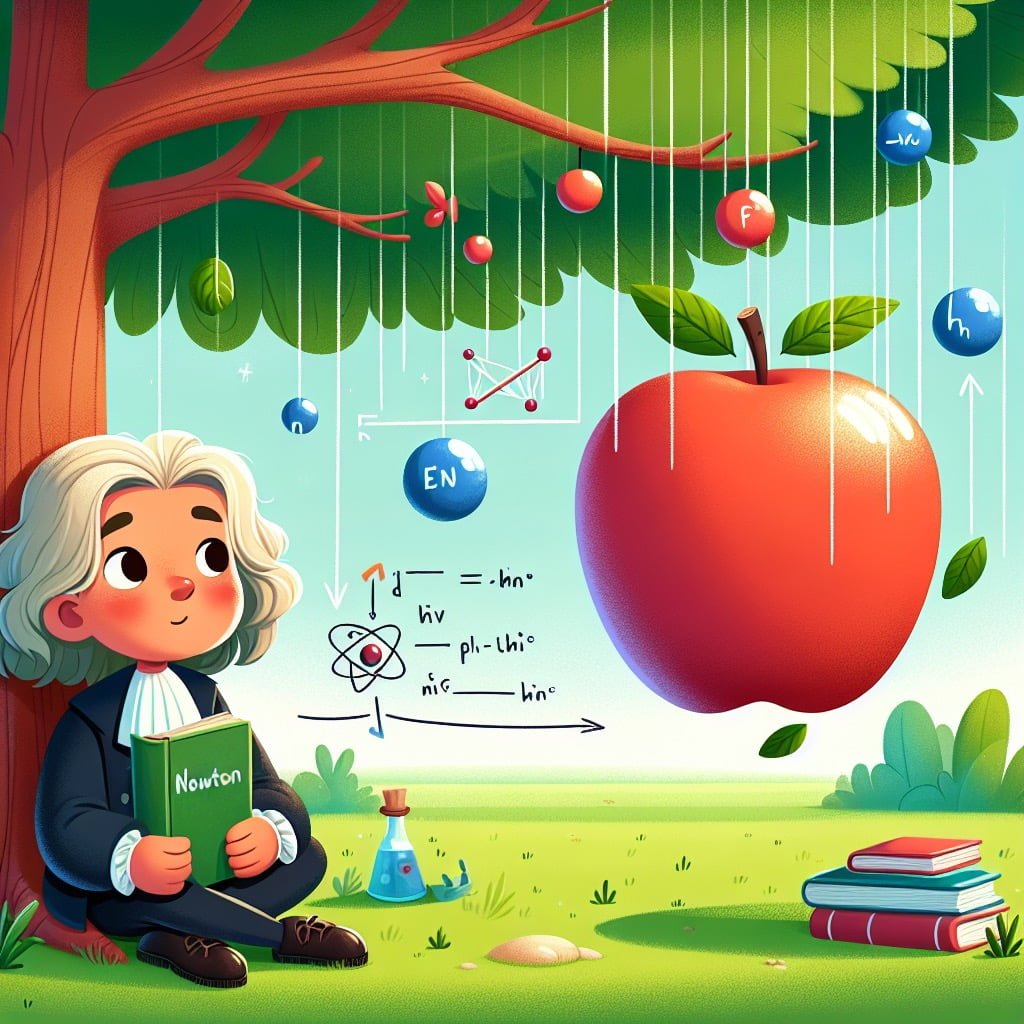
For younger kids: Isaac Newton discovered how things move and why objects fall to the ground.
For older kids: Newton’s laws of motion and the law of universal gravitation revolutionized the way we understand the fundamental forces that govern the movement of objects in the universe.
Detailed explanation:Isaac Newton is widely regarded as one of the most influential scientists in history, known for his groundbreaking work on the laws of motion and gravity. These laws laid the foundation for classical mechanics and revolutionized our understanding of the physical world.
One of the fun facts for kids about scientists is that Newton was not only a brilliant mathematician and physicist, but also a skilled inventor. He developed the first practical reflecting telescope, known as the Newtonian telescope, which greatly improved astronomical observations.
Newton’s three laws of motion are fundamental principles in physics that explain the relationship between an object’s motion and the forces acting on it. The first law states that an object at rest will stay at rest, and an object in motion will stay in motion unless acted upon by an external force. The second law describes how an object’s acceleration depends on the force applied to it and its mass. The third law states that for every action, there is an equal and opposite reaction.
Newton’s law of universal gravitation is another key concept in physics. It states that every mass attracts every other mass in the universe with a force that is proportional to the product of their masses and inversely proportional to the square of the distance between them. This law explains the force of gravity that keeps the planets in orbit around the sun and governs the motion of objects on Earth.
In conclusion, Isaac Newton’s laws of motion and gravity have had a profound impact on our understanding of the physical world. His contributions to science continue to inspire students and scientists alike, making him a legendary figure in the history of science. Kids can learn a lot from Newton’s work and his innovative approach to scientific inquiry.
Fun Facts for Kids About Scientists
3. Rosalind Franklin: DNA Structure Pioneer
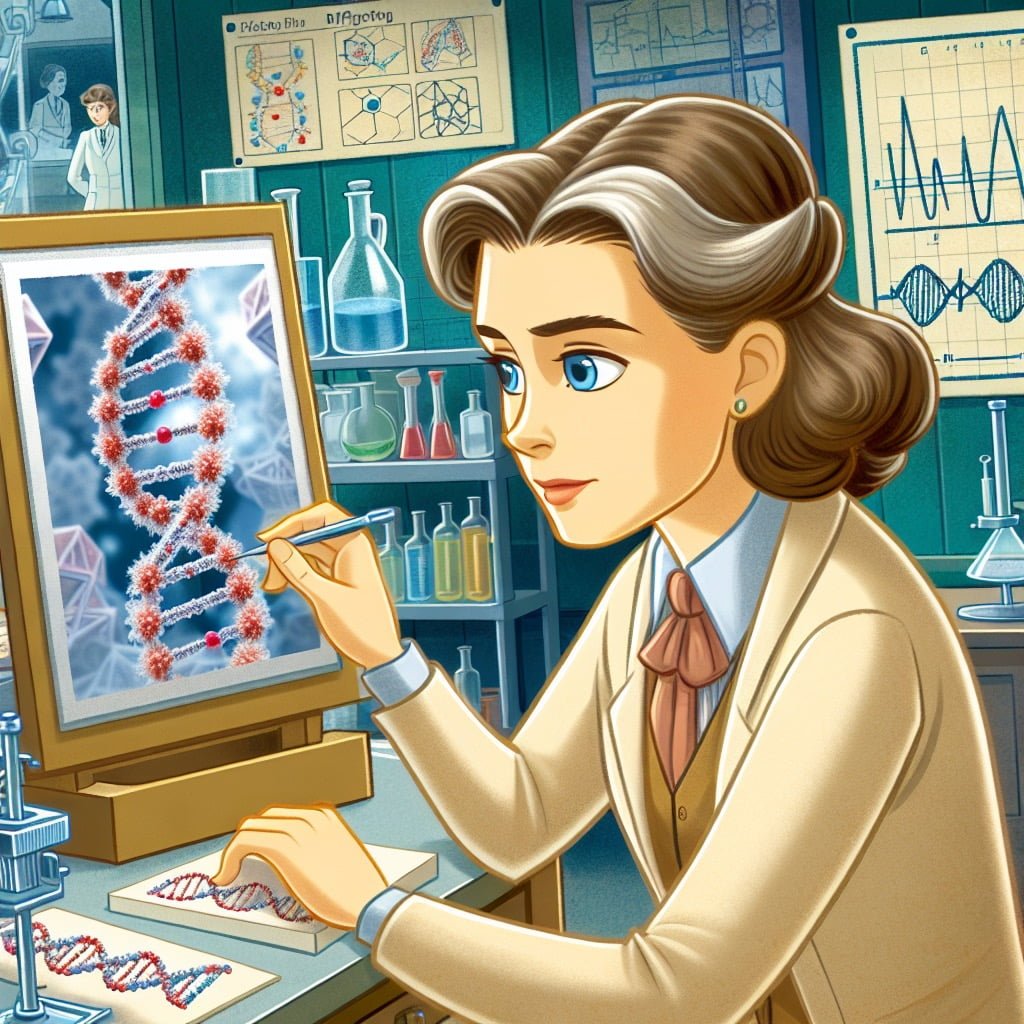
For younger kids: Rosalind Franklin’s research helped scientists understand the shape of DNA, which carries our genetic information.
For older kids: Rosalind Franklin’s X-ray diffraction images of DNA played a crucial role in the discovery of the DNA double helix structure by James Watson and Francis Crick.
Detailed explanation:Rosalind Franklin was a pioneering scientist whose work was crucial in the discovery of the structure of DNA, one of the most important biological molecules. Despite her significant contributions, Franklin’s role in this groundbreaking discovery was often overshadowed by her male colleagues, James Watson and Francis Crick, who received the Nobel Prize for their work on DNA structure in 1962.
Franklin’s research involved using X-ray diffraction techniques to study the structure of DNA molecules. Her data provided key evidence that DNA is composed of two strands twisted into a double helix, with the bases on the inside and the sugar-phosphate backbones on the outside. This fundamental insight laid the groundwork for the Watson-Crick model of DNA, which revolutionized our understanding of genetics and molecular biology.
One of the fun facts for kids about scientists like Rosalind Franklin is that she was not only a brilliant scientist, but also a skilled photographer. In fact, some of her most important scientific discoveries were made possible through her expertise in photography and X-ray crystallography. Franklin’s keen eye for detail and technical skills allowed her to capture the diffraction patterns of DNA molecules and analyze them to deduce their structure.
Despite the challenges and discrimination she faced as a female scientist in a male-dominated field, Rosalind Franklin’s legacy lives on as a trailblazer in the study of molecular biology. Her contributions to the understanding of DNA structure have had a lasting impact on scientific research and continue to inspire future generations of scientists, especially young girls interested in pursuing careers in STEM fields.
Fun Facts for Kids About Scientists
4. Stephen Hawking: Exploring Black Holes
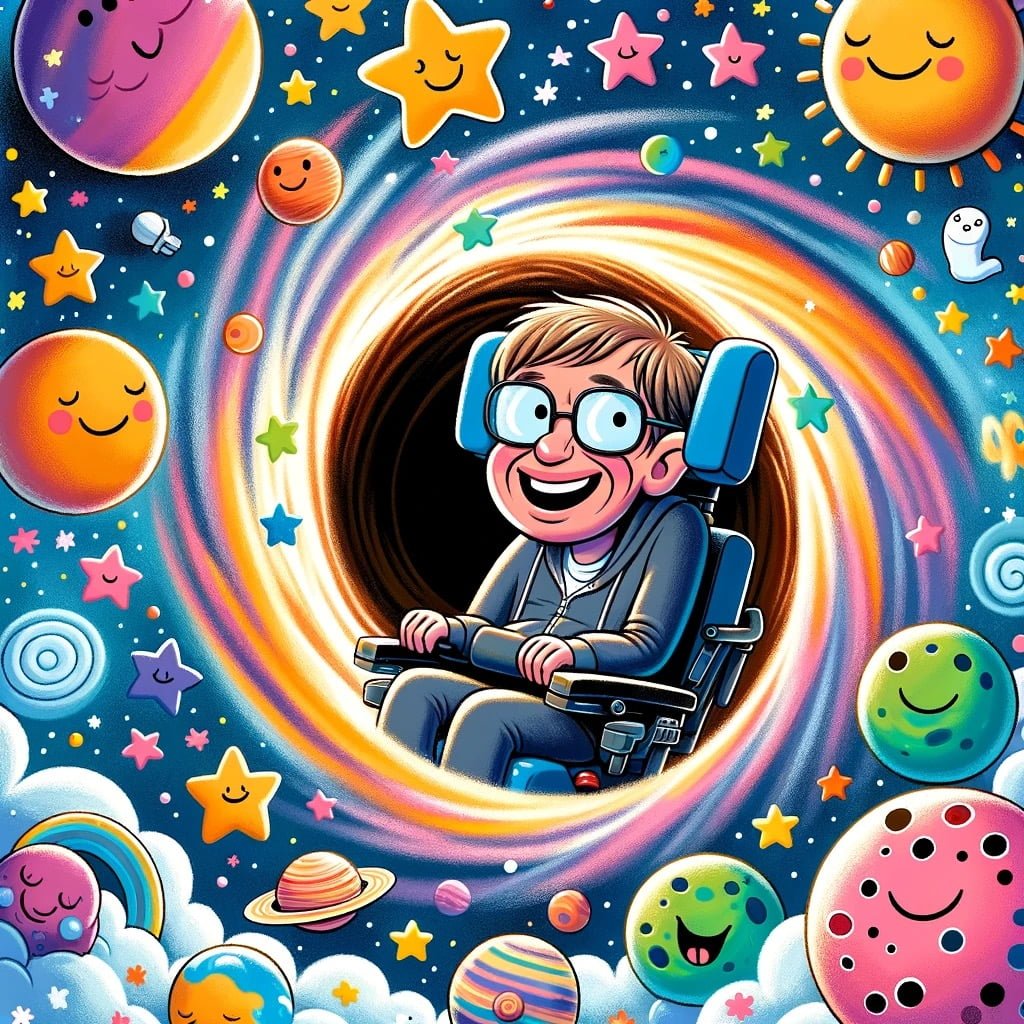
For younger kids: Stephen Hawking’s work helped us understand black holes, the mysterious objects in space.
For older kids: Stephen Hawking’s research on black holes and the nature of the universe revolutionized our understanding of cosmology and made complex scientific concepts accessible to the general public.
Detailed explanation:Stephen Hawking was a renowned theoretical physicist who made significant contributions to our understanding of the universe, particularly in the study of black holes. Despite being diagnosed with a rare form of ALS at a young age, Hawking’s work revolutionized the field of cosmology and inspired countless individuals to pursue careers in science.
One of the most intriguing Fun Facts for Kids About Scientists is that Stephen Hawking’s research on black holes led to the discovery of what is now known as Hawking radiation. This phenomenon describes the emission of particles from black holes, which was a groundbreaking concept in the field of physics. Hawking’s work showed that black holes are not completely black and do indeed emit radiation, ultimately leading to a better understanding of these mysterious cosmic entities.
Another fascinating Fun Fact for Kids About Scientists is that Stephen Hawking’s book, “A Brief History of Time,” brought complex scientific concepts to a wider audience. This best-selling book made Hawking’s research on black holes and the nature of the universe accessible to the general public, sparking a renewed interest in astrophysics and inspiring individuals of all ages to explore the wonders of the cosmos.
In conclusion, Stephen Hawking’s contributions to the study of black holes have had a lasting impact on the field of physics. His groundbreaking research, including the discovery of Hawking radiation, and his ability to communicate complex scientific ideas to the public have solidified his legacy as one of the greatest scientists of our time.
Fun Facts for Kids About Scientists
5. Jane Goodall: Pioneering Primatologist
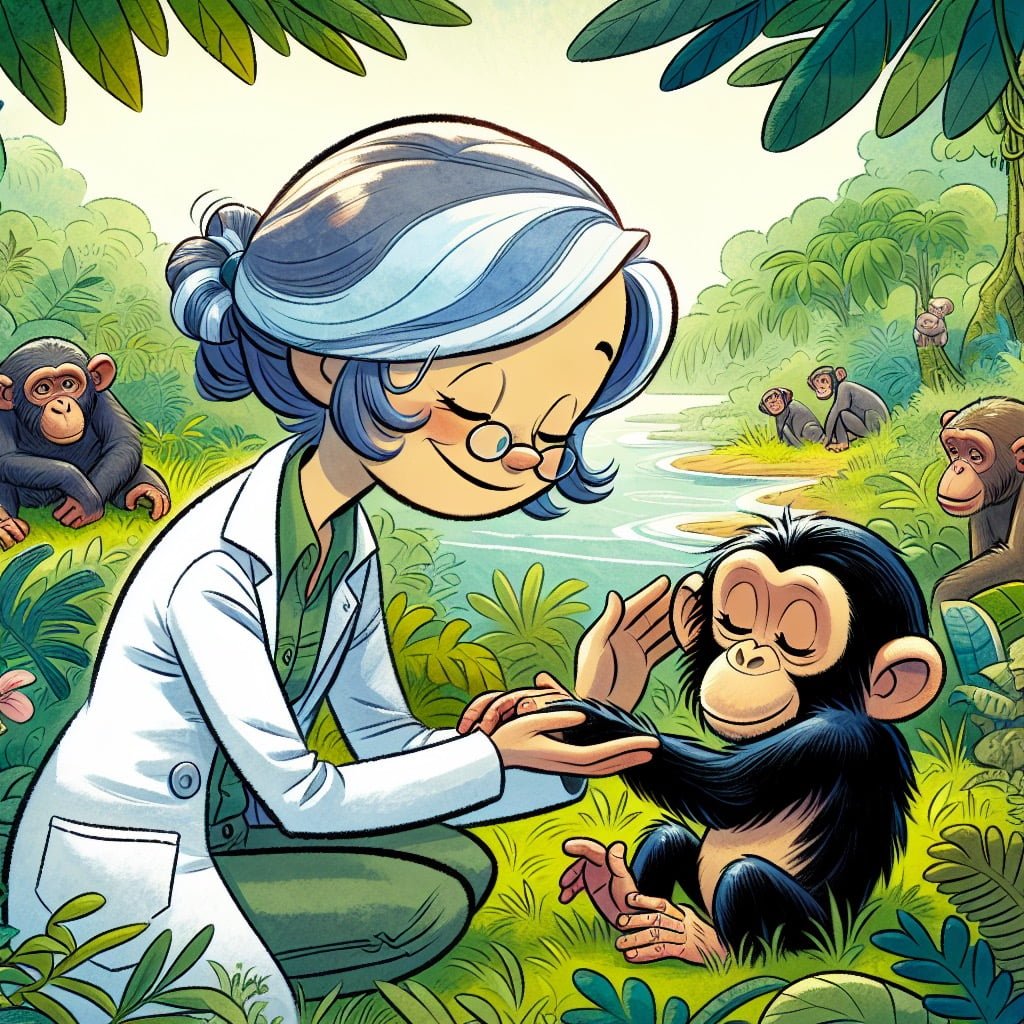
For younger kids: Jane Goodall studied chimpanzees and taught us a lot about these amazing animals.
For older kids: Jane Goodall’s groundbreaking research on the behavior of wild chimpanzees transformed our understanding of animal behavior and conservation efforts.
Detailed explanation:Jane Goodall is a pioneering primatologist known for her groundbreaking research on chimpanzees. Born on April 3, 1934 in London, England, Goodall’s passion for animals started at a young age. She always had a fascination with wildlife and spent her childhood exploring the outdoors and observing the behavior of animals.
Goodall’s career as a scientist began in 1960 when she traveled to Gombe Stream National Park in Tanzania to study chimpanzees. At that time, very little was known about these primates in the wild, and Goodall’s observations revolutionized our understanding of chimpanzee behavior. She discovered that chimpanzees use tools, have complex social structures, and show emotions such as joy, sorrow, and even violence.
One of the most fascinating Fun Facts for Kids About Scientists is that Goodall’s research also challenged the prevailing belief that humans were the only species capable of rational thought and emotions. Her studies showed that chimpanzees are intelligent beings with individual personalities and unique behaviors.
Goodall’s work has had a significant impact on the field of primatology and conservation. She has inspired countless young people to pursue careers in science and animal behavior. In addition to her scientific contributions, Goodall is also a passionate advocate for environmental conservation and animal welfare.
In conclusion, Jane Goodall is a remarkable scientist whose work has transformed our understanding of chimpanzees and their place in the natural world. Her dedication to research and conservation serves as an inspiration to scientists and animal lovers alike.
Fun Facts for Kids About Scientists
6. Nikola Tesla: Electrical Innovator

For younger kids: Nikola Tesla was a brilliant inventor who helped create the modern electrical system.
For older kids: Nikola Tesla’s inventions and discoveries in the field of electricity and magnetism laid the foundation for many technologies we use today, including alternating current (AC) power systems.
Detailed explanation:When it comes to Fun Facts for Kids About Scientists, one of the most fascinating figures in history is Nikola Tesla. Known for his groundbreaking work in the field of electrical engineering, Tesla was a true innovator whose inventions revolutionized the way we use electricity today.
One of the most famous contributions of Nikola Tesla is his development of alternating current (AC) electricity. Prior to Tesla’s work, Thomas Edison had popularized direct current (DC) electricity, but it was Tesla’s AC system that ultimately became the standard for power distribution. Tesla’s invention of the AC induction motor also played a key role in the widespread adoption of electrical power in homes and businesses around the world.
In addition to his work on AC electricity, Tesla was also a pioneer in wireless communication. He envisioned a world where electricity could be transmitted through the air, leading to the development of technologies such as radio and radar. Tesla’s experiments with wireless power transmission laid the foundation for the development of modern wireless technologies that we rely on today.
Despite his many achievements, Nikola Tesla was often overlooked and overshadowed by other inventors of his time. However, his work continues to inspire scientists and engineers to this day. From his groundbreaking work in electricity to his visionary ideas about wireless communication, Tesla’s contributions to the field of science and technology are truly remarkable.
In conclusion, Nikola Tesla was a true electrical innovator whose work laid the foundation for many of the technologies we use today. Through his inventions and experiments, he transformed the world of electricity and communication, leaving behind a legacy that continues to inspire future generations of scientists and engineers. Fun Facts for Kids About Scientists would not be complete without mentioning the incredible achievements of Nikola Tesla.
Fun Facts for Kids About Scientists
7. Margaret Hamilton: Computer Programming Pioneer

For younger kids: Margaret Hamilton wrote code that helped humans land on the moon for the first time.
For older kids: Margaret Hamilton’s work at NASA led to the development of software engineering as a legitimate and distinct branch of computer science.
Detailed explanation:Margaret Hamilton is a pioneer in the field of computer programming, known for her groundbreaking work on the Apollo space program. Born in 1936, Hamilton began her career as a mathematician before transitioning into programming. She joined the Massachusetts Institute of Technology (MIT) in the early 1960s, where she worked on developing software for the Apollo missions.
One of Hamilton’s most significant contributions to the Apollo program was the development of the onboard flight software for the Apollo command module and lunar module. Her team at MIT was responsible for writing the code that would guide the spacecraft and enable it to navigate to the moon and back safely. This software was crucial to the success of the Apollo 11 mission, which famously landed astronauts Neil Armstrong and Buzz Aldrin on the lunar surface in 1969.
Hamilton’s work on the Apollo program was groundbreaking in many ways. She pioneered the concept of software engineering and helped establish the importance of rigorous testing and verification processes in programming. Her innovations laid the foundation for modern software development practices and set a high standard for reliability and safety in mission-critical systems.
In addition to her technical achievements, Hamilton is also known for her advocacy for women in STEM fields. She has been a vocal supporter of increasing diversity in the tech industry and encouraging young girls to pursue careers in science and engineering.
In conclusion, Margaret Hamilton is a true trailblazer in the field of computer programming, whose work on the Apollo program paved the way for future generations of software engineers. Her contributions to space exploration and technology continue to inspire scientists and engineers around the world. Fun Facts for Kids About Scientists like Margaret Hamilton can spark a sense of wonder and curiosity about the world of science and innovation.
Fun Facts for Kids About Scientists
8. Albert Einstein: Theory of Relativity
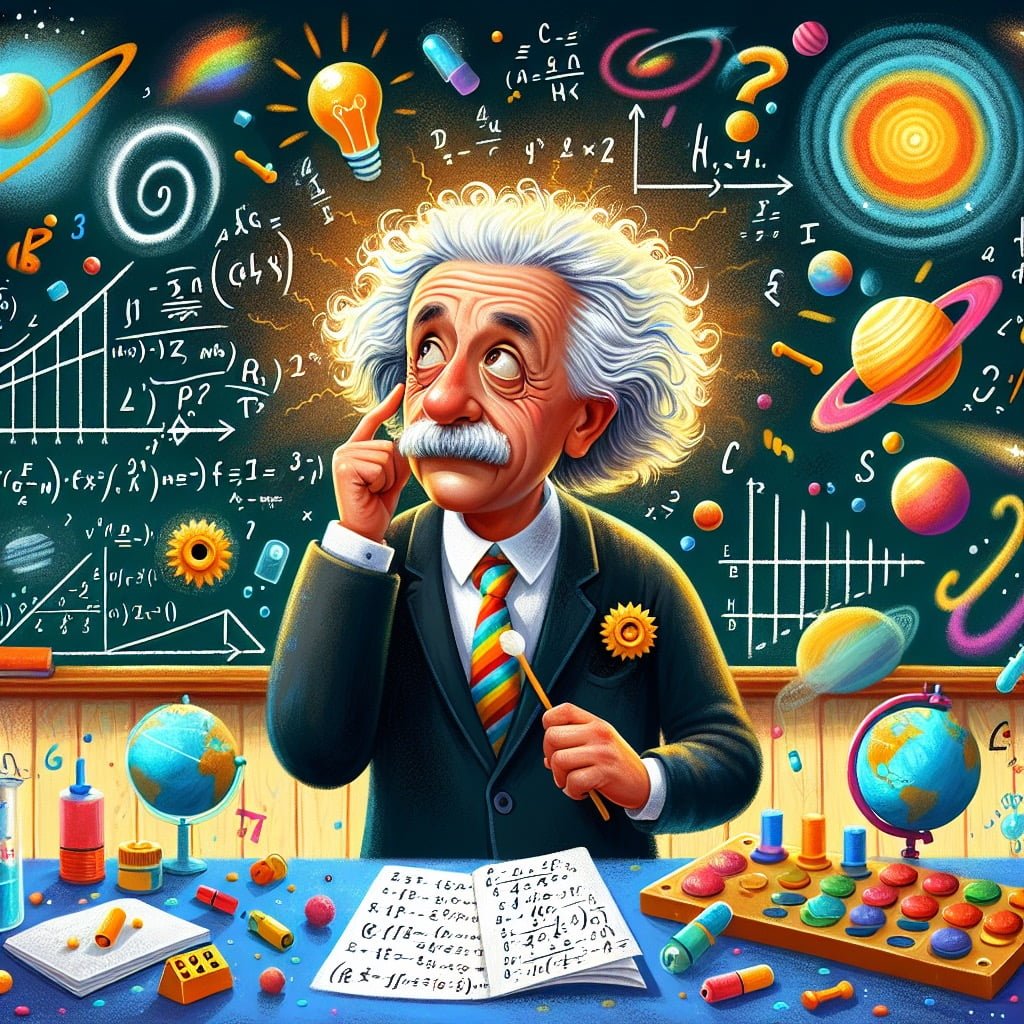
For younger kids: Albert Einstein developed a famous equation: E=mc^2, which explains how energy is related to mass.
For older kids: Albert Einstein’s theory of relativity revolutionized our understanding of space, time, and gravity, and paved the way for many modern technological advancements.
Detailed explanation:One of the most well-known and celebrated scientists in history is Albert Einstein, known for his groundbreaking work in the field of theoretical physics. One of Einstein’s most famous contributions to science is his Theory of Relativity, which revolutionized our understanding of space, time, and gravity.
The Theory of Relativity consists of two main components: Special Relativity and General Relativity. Special Relativity, published by Einstein in 1905, deals with the relationship between space and time, and how they are affected by motion. It introduced the famous equation E=mc^2, which states that energy and mass are interchangeable. This theory paved the way for advancements in particle physics and laid the foundation for many modern technological innovations.
General Relativity, published by Einstein in 1915, builds upon the principles of Special Relativity and extends them to include the effects of gravity. According to General Relativity, massive objects like planets and stars actually warp the fabric of spacetime, causing the phenomenon we know as gravity. This theory has been confirmed through various experiments and observations, such as the bending of light around massive objects like black holes.
These Fun Facts for Kids About Scientists show how Albert Einstein’s Theory of Relativity continues to be a fundamental aspect of modern physics, shaping our understanding of the universe on both the largest and smallest scales. The Theory of Relativity has had a profound impact on scientific research and technological developments, and Einstein’s work remains a source of inspiration for generations of scientists and thinkers.
Fun Facts for Kids About Scientists
9. Mae Jemison: First African-American Woman in Space

For younger kids: Mae Jemison was an astronaut who orbited the Earth in a space shuttle.
For older kids: Mae Jemison’s historic flight aboard the space shuttle Endeavour made her the first African-American woman to travel to space, inspiring future generations of scientists and astronauts.
Detailed explanation:Mae Jemison made history as the first African-American woman to travel to space aboard the Space Shuttle Endeavour in 1992. Jemison’s journey into space was not only a significant milestone for her personally, but also for women and people of color in the field of space exploration.
Born on October 17, 1956 in Decatur, Alabama, Jemison grew up with a passion for science and space. She excelled in her studies, eventually earning a degree in chemical engineering from Stanford University and later a Doctor of Medicine degree from Cornell University. Jemison combined her love for science and medicine by working as a general practitioner before pursuing her dream of becoming an astronaut.
Jemison was selected out of thousands of applicants to join NASA’s astronaut training program in 1987. She completed her training and was assigned to the Space Shuttle Endeavour mission as a mission specialist. On September 12, 1992, Jemison made history when she became the first African-American woman to travel to space, inspiring generations of young people, especially girls and minorities, to pursue careers in STEM fields.
In addition to her groundbreaking journey into space, Jemison has continued to advocate for diversity and inclusion in the sciences. She founded the Jemison Group, a technology consulting firm, and the Dorothy Jemison Foundation for Excellence, which promotes science education and literacy. Jemison’s achievements serve as an inspiration to all aspiring scientists and astronauts, and her legacy continues to encourage young people to reach for the stars.
In conclusion, Mae Jemison’s historic trip to space serves as a shining example of breaking barriers and achieving greatness in the field of science. Her story is a testament to the power of determination, hard work, and the importance of representation in STEM fields. Fun Facts for Kids About Scientists like Mae Jemison can ignite curiosity and inspire the next generation of space explorers and innovators.
Fun Facts for Kids About Scientists
10. Carl Sagan: Popularizing Science
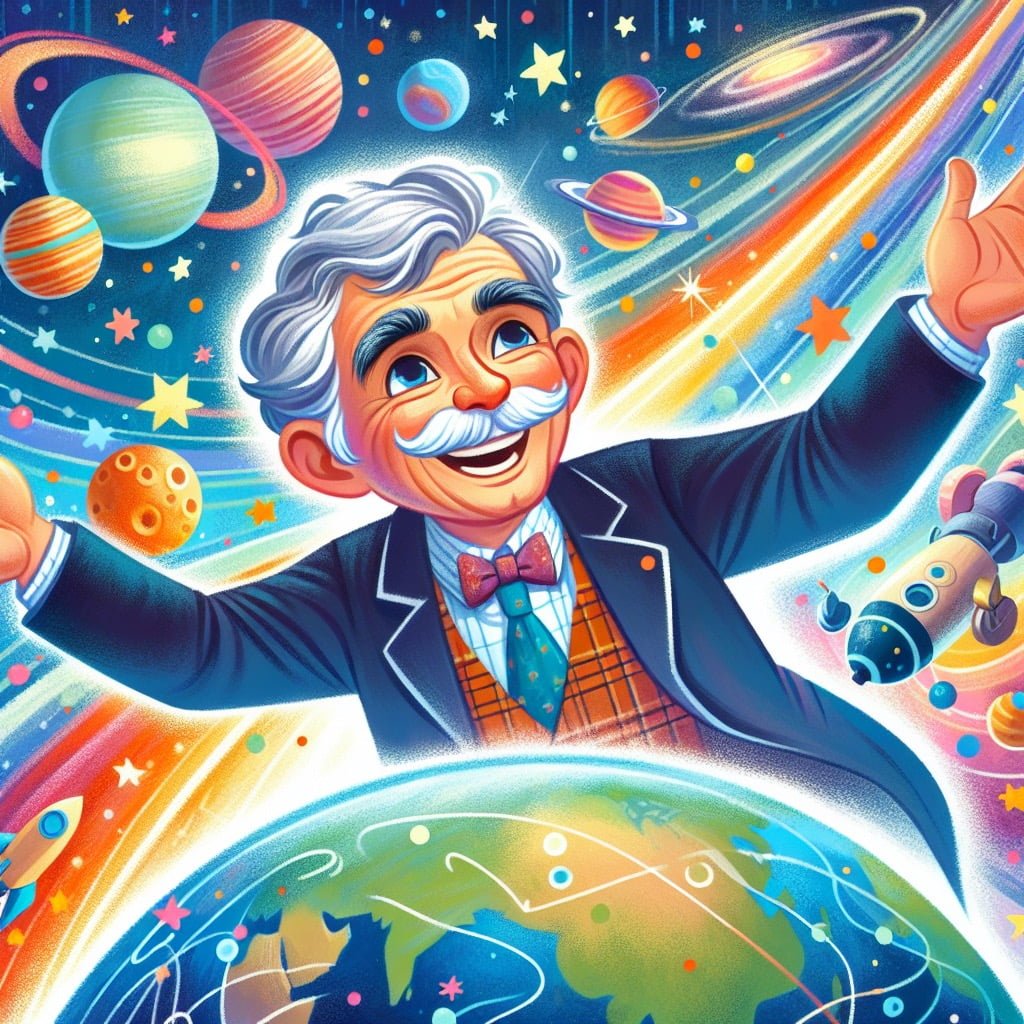
For younger kids: Carl Sagan was a famous scientist who explained the universe in fun ways that everyone could understand.
For older kids: Carl Sagan was a renowned astronomer, astrophysicist, and science communicator who popularized science through his books, television series, and outreach efforts, making complex scientific concepts accessible to the public.
Detailed explanation:Carl Sagan is widely recognized for his contributions in popularizing science and making complex scientific concepts accessible to the general public. His ability to engage and educate people of all ages, including children, has had a lasting impact on the field of science communication.
One of the reasons why Carl Sagan is such an influential figure in the world of popular science is his knack for presenting information in an engaging and entertaining manner. He understood the importance of capturing the attention of his audience, especially children, by incorporating fun facts and interesting anecdotes into his explanations. By doing so, he was able to make science more relatable and exciting for young learners, sparking their curiosity and encouraging them to explore the world around them.
In addition to his charismatic personality and engaging writing style, Carl Sagan also had a deep respect for the scientific method and a commitment to accuracy and integrity in his work. This dedication to truth and evidence-based reasoning helped to establish him as a trusted source of information in the scientific community and beyond.
Overall, Carl Sagan’s ability to combine educational content with entertainment value has made him a beloved figure in popular science. His legacy continues to inspire a new generation of science communicators to follow in his footsteps, sharing fun facts for kids about scientists and helping to make the wonders of the universe accessible to all.
Did You Know?
Cool Scientists’ work has inspired countless individuals to pursue careers in science and make their own discoveries that shape our world.
‘Fun Facts About Scientists for Kids’
Exploring fun facts about scientists is an exciting and inspiring way to spark children’s curiosity and passion for science. By learning about the lives and achievements of cool scientists, kids can gain a deeper understanding of the world around them and the incredible contributions that individuals have made to various fields of science.
Not only does reading fun facts about scientists provide educational value, but it also helps children see that scientists are real people with unique stories and experiences, not just individuals in lab coats conducting experiments. Learning about the struggles and triumphs of famous scientists can teach kids important lessons about perseverance, determination, and the power of pursuing their passions.
Additionally, delving into the world of cool scientists can inspire children to see that anyone, regardless of their background or circumstances, has the potential to make a positive impact on the world through science and innovation. By uncovering the amazing stories and achievements of scientists, children can be motivated to explore the wonders of science all around them and cultivate a love for learning and discovery. So, why not dive into the world of fun facts about scientists and ignite a spark of inspiration in young minds today?
Sources and additional information for Fun Facts for Kids About Scientists
WikipediaBritannicaScienceDirectNatureScientific AmericanNew ScientistNational Science FoundationScience NewsThe Royal SocietyLive ScienceScience MagazinePLOS ONENational Geographic KidsNASALive ScienceScientific AmericanNational Science Foundation (NSF)The Royal SocietyAmerican Association for the Advancement of Science (AAAS)Khan AcademyExploratorium
